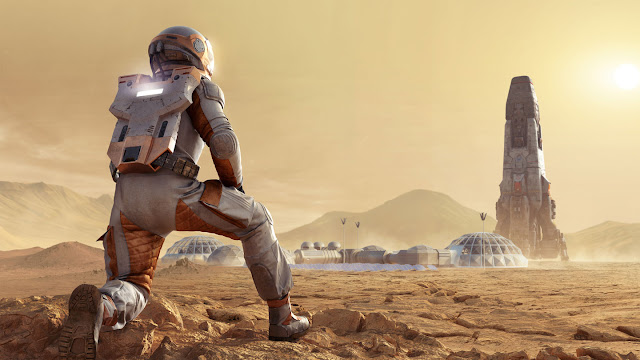Suppose you're an astronaut who has now landed on Mars, what do you need to survive?
According to a report published on The Conversation, the list can of course be shortened to water, food and shelter, but what we will focus on here is the need for oxygen. Can oxygen be found in Martian air or environment so as to facilitate the task of future astronauts? NASA is currently working on new technologies to send humans to Mars.
Air on Mars
Oxygen is present in the air we breathe here on Earth, produced by plants and some types of bacteria, but oxygen is not the only gas in the Earth's atmosphere, it is not even the most abundant gas, with our air consisting of only 21% oxygen and almost all the rest being nitrogen (about 78%).
You might be wondering if there's more nitrogen in the air, why breathe oxygen? Technically, when you breathe, you take whatever is in the atmosphere, but your body only uses oxygen and gets rid of the rest when you exhale.
Mars' atmosphere is thin and only 1% of the Earth's atmosphere, 99% less air on Mars than on Earth, partly because Mars is about half the size of Earth, and its gravity is not strong enough to prevent atmospheric gases from escaping into space.
The most abundant gas in this thin air on Mars is carbon dioxide, the high concentrations of which are toxic to us on Earth, but fortunately, carbon dioxide, which makes up 96% of the air on Mars, represents only a much lower percentage than 1% of our atmosphere on Earth.
At the same time, Mars has barely oxygen, accounting for only one tenth of one percent of the air, and is almost inadequate for humans' survival. If you try to breathe on Mars without wearing a space suit that provides oxygen, you will die in an instant; You will choke and boil your blood due to low atmospheric pressure.
Life without oxygen
Production of oxygen on Mars
One of the seven instruments aboard the Perseverance is the MOXIE, a spectacular device that takes carbon dioxide from Mars' atmosphere and converts it into oxygen.
If MOXIE works the way scientists hope, future astronauts will not only make their own oxygen but can use it in rocket fuel that they will need to return to Earth, as oxygen is an important component of most rocket fuels.
NASA estimates that repatriating four astronauts from Mars requires about 25 tons of oxygen, and carrying anything from Earth to Mars is very expensive, and rockets have limited capacity, so every gram is important.
MOXIE is a step towards solving these problems by producing oxygen on Mars; It absorbs carbon dioxide from Mars' atmosphere and heats it to temperatures of about 800 degrees Celsius, allowing it to remove oxygen atoms from carbon dioxide and then vent carbon monoxide.
A promising future
The first test, conducted on April 20, 2021, produced about 5 grams of oxygen, equivalent to about 10 minutes of astronaut breathable air.
NASA's Jim Reuter says in a statement published in April 2021 that MIE has more work to do, "but the results of this technology are promising as we move towards our goal of one day seeing humans on Mars."
MIE can only produce about 10 grams of oxygen per hour, but future oxygen generators can be much larger and remove oxygen atoms from carbon dioxide much faster.
The more oxygen people can produce on Mars the less they need to bring from Earth, and the easier it becomes for astronauts to go there, but even with "locally produced" oxygen astronauts will still need a spacesuit.




Comments
Post a Comment